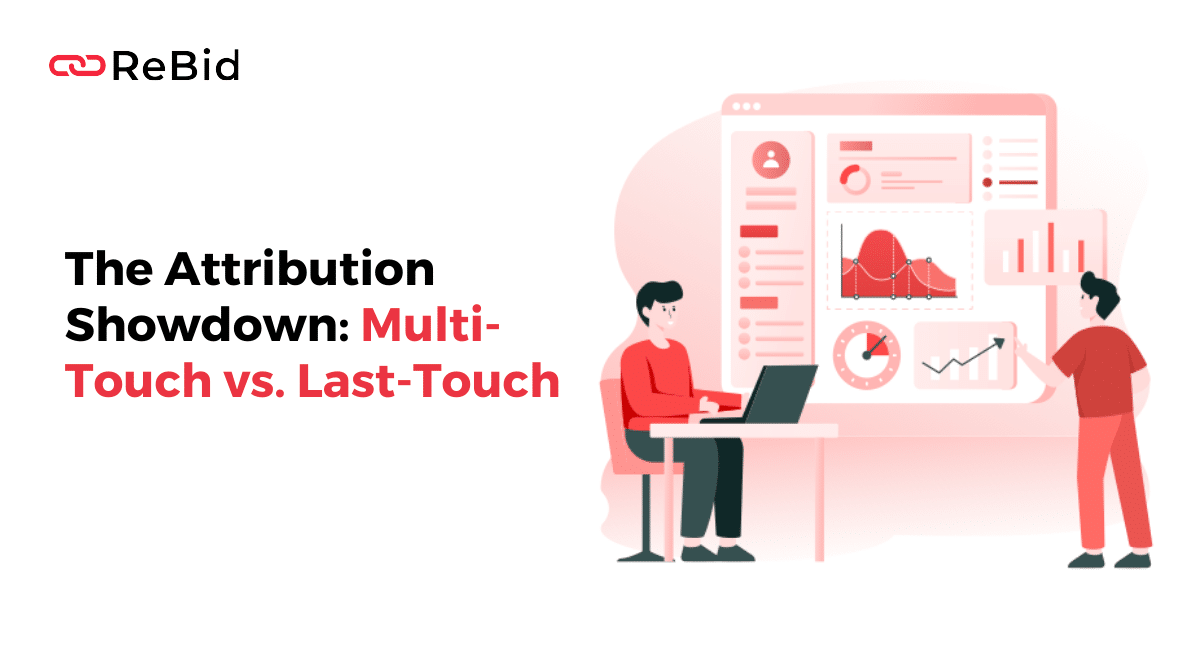In the ever-evolving world of marketing, understanding where your customers come from and how they interact with your brand is crucial. This is where marketing attribution models come in. But with terms like “multi-touch” and “last-touch” flying around, it can get confusing. Don’t worry, this blog post will be your guide! We’ll break down the two main attribution models, explore their strengths and weaknesses, and help you choose the right one for your marketing strategy.
The Need for Sophisticated Attribution
Gone are the days of simple, single-touch attribution models. Today’s customer journeys are complex, with multiple touchpoints across various channels like social media, email, and search engines. Traditional models that credit just one interaction (like the first click or the last) fail to capture this intricate dance.
This complexity is further amplified by stricter privacy regulations and limitations on cookie tracking. Marketers now face challenges in accurately attributing sales and conversions to the right channels.
Understanding Touch-Based Attribution
Marketing attribution is all about identifying the various touchpoints a customer encounters on their path to conversion. It helps you understand which marketing efforts resonate best and contribute most to your goals.
Last-Touch Attribution: Simple Yet Limited
Last-touch attribution assigns all the credit for a conversion (like a sale or a lead) to the final interaction a customer had with your brand before taking action. Think of it as giving the trophy to the last player who scores a goal, ignoring the assists from teammates.
Pros:
- Easy to understand and implement.
- Useful for short sales cycles or impulse purchases where the final nudge matters most.
- Helps identify channels driving conversions for quick optimization.
Cons:
- Neglects all touchpoints before the final interaction, distorting the customer journey.
- Not ideal for long sales cycles where the last encounter may not reflect the entire decision-making process.
- Can lead to misallocation of marketing budget by underestimating the value of earlier touchpoints.
- Ignores the role of upper-funnel marketing (content, social media) in building brand awareness and engagement.
Multi-Touch Attribution: A More Nuanced View
Multi-touch attribution (MTA) takes a holistic approach, recognizing the impact of every touchpoint along the customer journey. It distributes credit to each interaction (ad click, email open, social media engagement) to provide a more comprehensive understanding of your marketing effectiveness.
Here are some popular multi-touch models:
- Linear Model: Credits all touchpoints equally, assuming each plays a similar role.
- Time Decay Model: Grants more credit to touchpoints closer to conversion, reflecting their increased influence.
- U-shaped model: Emphasizes the first and last touchpoints (think brand awareness and final conversion) while acknowledging the role of interactions in between.
- W-shaped Model: Similar to the U-shaped but adds weight to lead creation as another crucial stage.
- Custom/Algorithmic Model: Leverages machine learning to dynamically assign credit based on each touchpoint’s likelihood of influencing conversion. This can be tailored to your specific marketing strategy and customer behavior.
Choosing the Right Model: When to Use What?
Now that you understand the models, let’s see when each shines:
Last-Touch Attribution:
- Ideal for short, straightforward sales cycles.
- Businesses with a dominant marketing channel driving most conversions.
- Limited budget and resources for complex analytics.
Multi-Touch Attribution:
- Essential for long sales cycles with multiple touchpoints.
- Omnichannel marketing strategies where understanding each channel’s impact is crucial.
- Marketers aiming for a comprehensive customer journey view and efficient budget allocation.
Traditional MTA models often lack complete customer journey data, especially from offline channels. ReBid’s platform bridges this gap by integrating data from online and offline sources, providing a holistic view for accurate analysis. We call this Universal Attribution. Additionally, our predictive analytics empower you to make data-driven decisions by forecasting customer behavior based on current touchpoints.
The Takeaway
Marketing attribution models are your compass, guiding you through the complexities of customer interactions and campaign effectiveness. Choosing the right model sheds light on the most influential touchpoints, allowing you to optimize resources and maximize ROI.
FAQs
Which attribution model is right for my business, last-touch or multi-touch?
The best attribution model for your business depends on your specific marketing goals and customer journey. Here’s a quick guide:
- Last-Touch Attribution: Ideal for short sales cycles (think impulse purchases) or businesses with a dominant marketing channel driving most conversions. It’s also easier to implement if you have limited resources for complex analytics.
- Multi-Touch Attribution: Essential for long sales cycles with multiple touchpoints (e.g., social media ads, email marketing, blog posts) or omnichannel marketing strategies. It’s also recommended if you want a comprehensive view of the customer journey and need to optimize budget allocation across various channels.
What are the limitations of Last-Touch Attribution?
While Last-Touch is simple, it has some drawbacks:
- Ignores the role of earlier touchpoints: It misses the influence of content, social media engagement, and other efforts that build brand awareness and nurture leads.
- Distorts complex customer journeys: In long sales cycles, the last click might not reflect the entire decision-making process.
- Can lead to budget misallocation: By underestimating earlier touchpoints, you might undervalue valuable marketing efforts.
What are the different Multi-Touch Attribution models, and which should I choose?
Multi-Touch Attribution offers a more nuanced view with various models distributing credit differently:
- Linear Model: Credits all touchpoints equally.
- Time Decay Model: Gives more weight to touchpoints closer to conversion.
- U-Shaped Model: Emphasizes first and last touchpoints (brand awareness and conversion).
- W-Shaped Model: Similar to U-shaped but adds weight to lead creation.
- Custom/Algorithmic Model: Uses machine learning to dynamically assign credit based on each touchpoint’s influence.
The best model depends on your marketing goals and customer behavior. Consider factors like sales cycle length and the importance of different touchpoints in your strategy.





